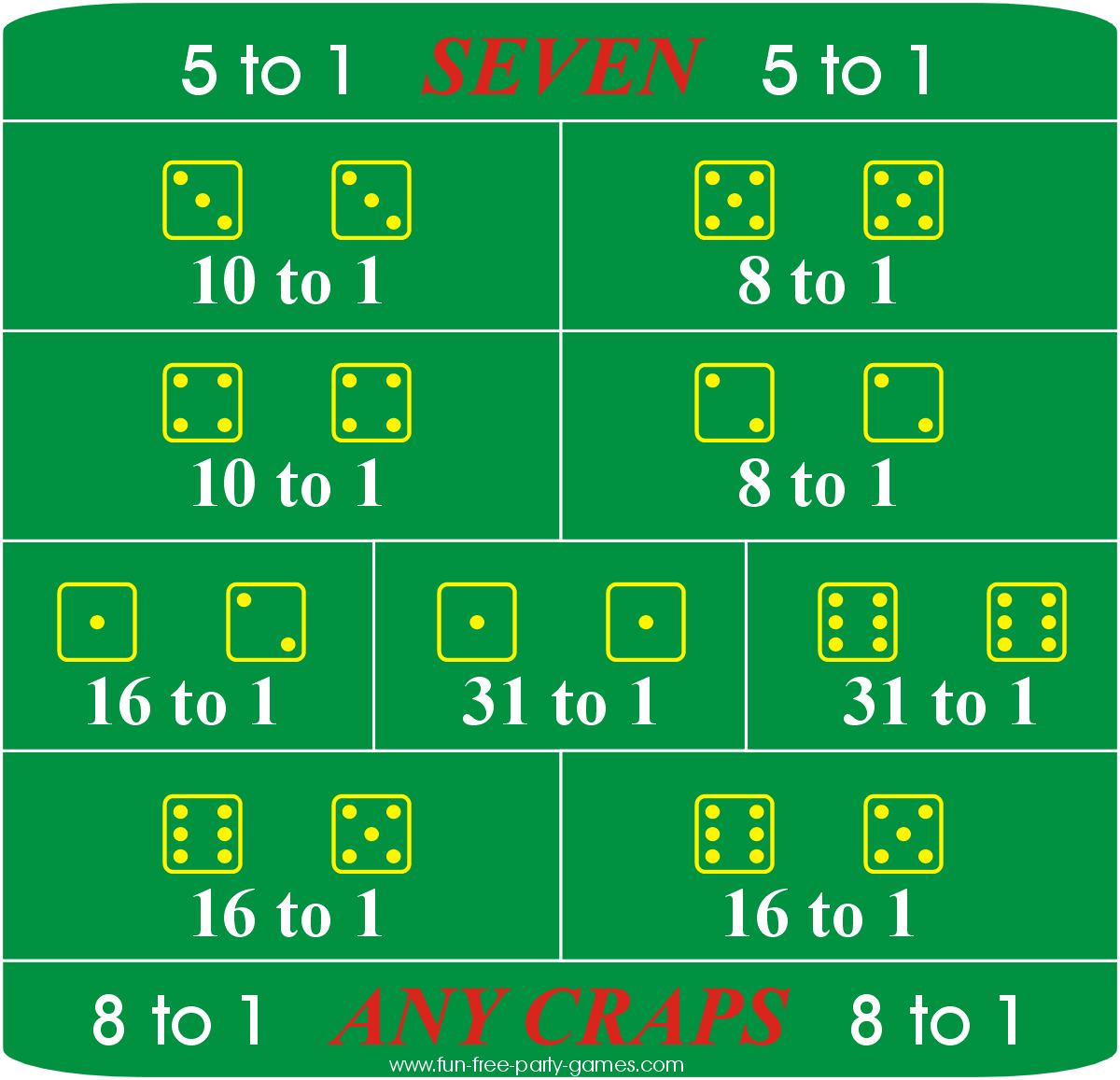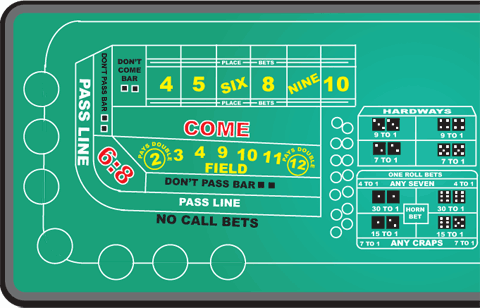Craps Board Explained
If you want to learn to play craps, you should start by learning how the craps table works.
- Craps Board Explained Sheet
- Craps Board Explained Board
- Craps Board Explained
- Craps Board Explained Games
It might seem intimidating at first, but it’s less complicated than you think.
And smarts craps players ignore most of the table, anyway.
By the end, you’ll be familiar with the most common casino Craps real money bets and be ready to play online Craps like a pro. How to Place Bets and Roll the Dice. In online casino Craps games, some money play bets need to be placed at the start of the Craps game round, while others can be wagered throughout the Craps game round. After the craps table layout is explained, some data should be provided on participants in the game of craps. Thus, near the table where craps is played, it is possible to see the following people: A boxman is a casino employee who sits near a box with chips on the long side of the table in the center, monitors the progress of the game.
This post explains in detail for beginners what they need to know about placing bets on the craps table.
The Basics of the Craps Table
In casinos, craps is played at a table, usually one covered in green felt. The bets available are labeled on the felt. The table is also the playing surface for the game – you roll the dice on the same table where you place your bets.
Most of the best US casinos use a long table for craps – it’s 12 feet long, but it’s kind of rectangular. You’ll find smaller craps tables sometimes, but most casinos use the 12 feet long table because it accommodates more players – up to 16 people can play craps comfortably at a 12 feet long table.
The rail around the table is padded because a lot of people get tired of standing and want something to lean on. Craps isn’t like blackjack; you don’t sit on a stool at the craps table.
Each player has a rack where he can put his chips while he plays. That’s located next to the padded railing.
The green felt is considered the bed of the craps table, and it has (almost) all the bets available stenciled on it.
Also, the craps table isn’t really a flat table – it’s more like a big, rectangular bowl. This prevents the dice from rolling onto the ground. The walls inside the table are padded with rubber pyramids, which serve to further randomize the rolls of the dice.
If you’re the shooter, you’re required to roll the dice all the way to the pyramids on the other side of the table.
How the Bets Are Laid Out on a Craps Table
If you’ve never played before, you’ll think craps is too complicated because of all the different bets available on the layout.
But it’s easier than you think.
You can think of the table as having a side section and a center section. (Really, there are 2 side sections – one on either end of the craps table. They’re identical, though.)
You’ll see blocks with numbers and words in them in each section. Those are the bets you can place.
You should avoid the bets in the center section, which are the bets that the stickman will encourage you to make. I’ll explain the center section later, but for now, I want to focus on the section where you’ll be making the most bets if you’re a smart player.
The self-service bets – the bets you’re allowed to place for yourself – include the following bets:
- Pass
- Don’t Pass
- Come
- Don’t Come
- Field
- Big 6
- Big 8
These are the most basic bets in craps, and they have the lowest house edge – although Big 6 and Big 8 are the worst in this batch. (On some tables, those aren’t even in the self-service area at all.)
When one of these bets wins, the dealer puts your winnings on the table next to your bet. If you leave that money on the table, it goes back into action.
The other area in the side section is the dealer’s area. Here, you need to get the dealer to place your bet for you. This area includes the point boxes:
- 4
- 5
- Six
- 8
- Nine
- 10
You’ll notice that I spelled out 6 and 9. That’s how they’ll appear on the table so that players don’t get confused about which is which.
When a shooter sets a point, the dealer puts a puck in the appropriate box to signify the point for that game. These spots serve a 2nd purpose, too – you can ask the dealer to place Buy, Lay, and Place bets for you in those spots.
Come and Don’t Come are still self-service bets, but the odds bet for those must be handled by the dealer. The dealer uses the chips you bet on Come or Don’t Come to mark the number in those numbered boxes, and they put the odds bet next to the appropriate number, too.
The Center Section Is for Prop Bets, Which You Should NEVER Make
Craps Board Explained Sheet
You’ll notice that the stickman, who’s running the center section of the craps table, acts like a carnival barker or one of those loud pitchmen you sometimes run into at a flea market. That’s because his job is to sell the worst bets on the craps table to the players.
The reason these are the worst bets on the table is because the house edge for ALL these bets is insanely high.
The house edge is a statistically expected loss that you’ll see over the long run with a specific kind of bet.
The pass line bet has a house edge of 1.41%, which is relatively low for a casino game. In fact, it’s one of the best bets in the casino.

But the house edge on the bets in the center of the table is 9% or higher.
Nonetheless, here you can place bets in this section if you want to.

To do so, you toss your chips to the center of the table to the stickman and announce what bet you want to place. Try to use some skill and deftness when you do this – you don’t want to knock someone else’s chips over, for example.
When you win one of these proposition bets, the chips are paid directly to you rather than just being placed on the table next to your original bet.
Examples of Proposition Bets and Their House Edge
The hard way bets are bets on totals like 4, 6, 8, or 10.
But they only pay off if the shooter rolls that total “the hard way.”
This means that a total of 4 must be a pair of deuces, a 6 must be a roll with of both 3s, an 8 must consist of a couple of 4s, and a 10 must be made up of 5s.
The payout for a hard 6 or hard 8 is 9 to 1, and the payout for a hard 4 or 10 is 7 to 1.
Craps Board Explained Board
The house edge for the hard 6 or hard 8 bet is 9.09%.
The house edge for the hard 4 or hard 10 bet is 11.11%.
I often suggest that many gambling writers make too much of a fuss about the house edge on casino games, but this is one instance where it’s a big deal.

You’re looking at a statistical advantage for the casino that’s 10 times as great on one bet over the other bet.
You should pay attention to that, for sure.
Craps Board Explained
Just skip the proposition bets.
You’ll have just as much fun at the craps table, you’ll probably stay in action longer, and you’ll have a better chance of going home from the craps table a winner.
How to Get Used to the Craps Layout
The best way to get used to the game of craps is to play at an online casino, like those recommended on this site. All the casinos listed here offer free-to-play versions of their casino games. You play for “play-money” chips.
The big advantage of doing this is that you’re not risking any real money when you’re playing these free craps games.
It’s much better to learn without risking money if you can.
Conclusion
You need to know how the craps table and its layout work if you want to stand a chance at winning when shooting dice.
The best way to do that is to practice on a free game after reading through this quick tutorial.
Craps Board Explained Games
The most important advice I offer in this post, though, is to stay away from those bets in the middle of the table. The house edge is just too high on those.